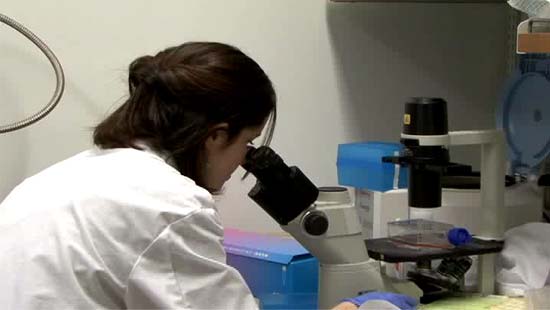Most Common Breast Cancer on the Rise in US

Breast cancer rates, which had been declining in the U.S. since 2000, leveled off in 2007 and since then have remained relatively constant, a new study shows.
But a closer look at the study tells two stories: one of steadiness and one of change.
“Breast cancer is not one disease,” said William Anderson, a cancer epidemiologist at the National Cancer Institute and author of the new paper. “It’s the sum of these two different types of cancer that have different risk factors and different trends.”
The study showed that the hard-to-treat, estrogen receptor-negative breast cancer (ER-negative) has been declining steadily since 1992.
However, rates of the more common ER-positive breast cancer, showed more variance. From 1992 to 2000, its incidence rose, peaking at 232 cases per 100,000 women. Then, it dropped sharply from 2000 to 2003. Since then, it’s been slightly increasing.
The reasons for these different rates aren’t fully understood yet.
“There are possibly some risk factors in the population that affect these types of tumors differently,” Anderson said. “The cancers are really different, so one would expect that.”
Sign up for the Live Science daily newsletter now
Get the world’s most fascinating discoveries delivered straight to your inbox.
The study will be published in the September issue of the Journal of National Cancer Institute. Constant rates From the 1940s, when they were first tracked, through the early 2000s, breast cancer rates consistently rose. The use of mammography led to better detection, so more cases were diagnosed, and the widespread use of hormone replacement therapy by women after menopause likely triggered some cancers, Anderson said. A shift away from hormone replacement therapy in 2002 — when it was linked to breast cancer — led to a drop in the numbers. That drop has since leveled out, this and other studies show. But that leveling out has come because the incidence of ER-positive cancer, the most common type of breast cancer, is rising, whereas ER-negative cancer is on the decline, the new study showed. ER-positive tumors depend on the hormone estrogen for their growth. So drugs that block estrogen receptors can stop the growth of these tumors. But such drugs — tamoxifen is one of the most popular—have no effect on the rarer ER-negative cancers, which grow without need for the hormone. “Doctors began to collect the hormone status of tumors around 1990,” Anderson said. “But it wasn’t widely done at first.” In 1992, 74 percent of breast cancers were analyzed for hormone receptors. Now that’s closer to 95 percent. Because epidemiologists don’t have the full number of each cancer type from the 1990s, they haven’t been able to make good conclusions about trends in the incidence of each type. But Anderson and his teamed parsed the data in a new way that let them make educated guesses about each tumor that hadn’t been typed. Depending on the year, the woman’s age, and the stage of the cancer, they calculated the probability that each tumor was ER-positive or ER-negative. This filled in the missing gaps from 1992 to 2008. What the future may hold Anderson’s team then projected how these numbers will change between now and 2016. Overall rates, they found, will stay around 200 cases per 100,000 women. But ER-negative breast cancer will drop from 43 to 38 cases per 100,000 women, and ER-positive cancers will rise from 158 to 166 cases per 100,000 women. In a paper published in February, Ahmedin Jemal, an epidemiologist at the American Cancer Society, was the first to report that overall breast cancer rates are no longer declining as they were a decade ago. The new paper, he said, uses additional historical data to confirm his team’s findings. Whether the new prediction for future rates will hold true is hard to say, Jemal said. “I think future trends are very important for planning purposes, but it is always difficult to predict the future,” Jemal said. “There can be changing risk factors or changing screening rates that we can’t predict now.” The best news out of the new study, both scientists said, is the decline in ER-negative cancers. “Those are the more difficult to treat,” Jemal said, “and generally have worse outcomes, so any decrease at all is good news.” Pass it on: Although overall breast cancer incidence is steady, the rate of estrogen receptor-negative cancer, the hardest type of breast cancer to treat, is declining.
This story was provided by MyHealthNewsDaily, sister site to LiveScience. Follow MyHealthNewsDaily on Twitter @MyHealth_MHND.









